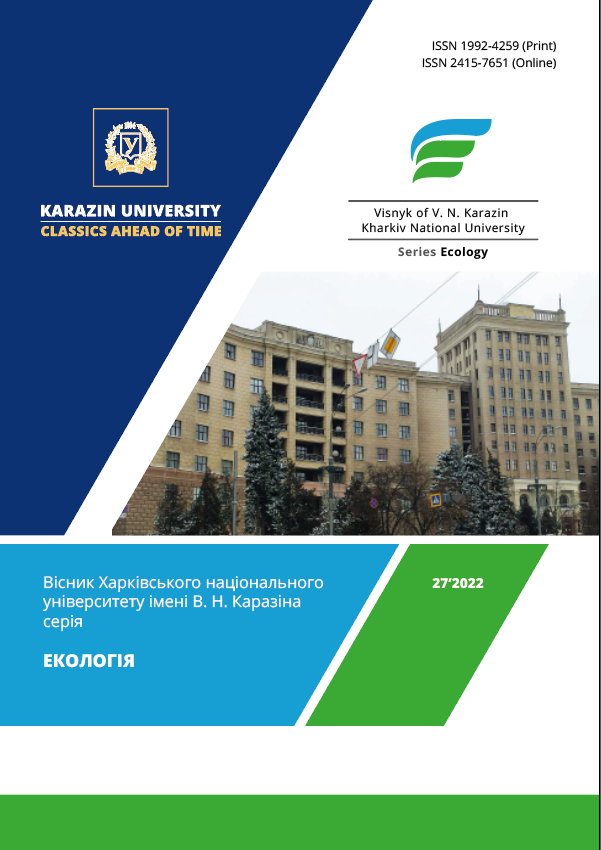Assessment of the prospects of creating new forests in Ternopil region
Abstract
Modern globalization processes, both in Ukraine and around the world, are leading to the increasing use of natural resources, including forests. That is why there is a question of assessing the restoration and increase of forest areas, which will ensure sustainable forest development.
Purpose of the work is to evaluate the creation of forest resources within the Ternopil region and propose their optimization.
Methods. Descriptive, statistical, comparative-geographical, analysis and optimization modeling.
Results. The Ternopil region is one of the sparsely forested regions of Ukraine. Forestry enterprises of the region create new forests in the areas available for afforestation in the course of implementation of forestry management programs of the region, but the main limiting factor is the availability of land plots to meet the needs of afforestation. In order to optimize the process of increasing forested land, it is necessary to afforest lands unsuitable for agricultural production and to transfer self-forested lands to forestry enterprises. However, one of the obstacles to the transfer of land for the use of forestry enterprises is the reluctance to lose valuable assets in the form of land, and the vague prospect of receiving dividends. The state forestry enterprises of the region submitted applications to the city, village and village councils for the allocation of land plots, only some positive responses were received. It is also worth mentioning the problem of collective farm forests, which are currently not provided for use by forestry enterprises of the region and within which neither protection nor use of forest resources is carried out. The main problem for such forests is their transfer for permanent use to state or communal forestry enterprises, or communal enterprises with created specialized forestry units. Therefore, the optimal way out of such a situation can be considered the creation of communal forestry enterprises in territorial communities of the region, which would have the opportunity to gradually create new forests on such a basis.
Conclusions. Thus, the identified problems and trends and problems of meeting the needs of the region in forests and achieving the optimal indicator of forest cover of the region allowed to open an alternative way to solve this problem on the basis of direct managers of potential land plots that can be afforested.
Downloads
References
Forest Code of Ukraine (2022, May 08). Retrieved from https://zakon.rada.gov.ua/laws/show/3852-12#Text
Order of the Ministry of Environment of 22.07.2021 № 494 "On approval of indicators of regional standards of optimal forest cover of the territory and the minimum necessary protective forest cover of agrolandscapes of Ukraine" (2022, May 08). Retrieved from https://zakon.rada.gov.ua/laws/show/z1043-21#Text (in Ukrainian)
Decree of the President of Ukraine №228 / 2021 "On some measures for the preservation and reproduction of forests" (2022, May 08). Retrieved from https://www.president.gov.ua/documents/2282021-39089 (in Ukrainian)
Characteristics of forestry of the region. (2022, May 29). Retrieved from https://ternopillis.gov.ua/upravlinnja/kharakteristika-lisovogo-gospodarstva-oblasti.html (in Ukraini-an)
Materials of the Department of Ecology and Natural Resources of the Ternopil Regional State Administration on the accounting of self-afforested and suitable for afforestation lands of territorial communities of the Ternopil region as of 10.02.2022. (in Ukrainian)
Materials of reports of the Ternopil Regional Department of Forestry and Hunting on the work carried out on the protection, defense, use and reproduction of forest plantations, wildlife, forestry and hunting as of 01.06.2022. (in Ukrainian)
Materials of reports of the Department of Ecology and Natural Resources of the Ternopil Regional State Administration on the status of implementation of tasks defined by the Decree of the President of Ukraine dated 07.06.2021 № 228/2021 "On some measures to preserve and restore forests" as of 01.05.2022. (in Ukrainian)
Land allotment project (2022, May 28). Retrieved from https://zemlevporyadnik.com.ua/proekt-zemleustroyu-vidvedennya.html (in Ukrainian)
Creation of new forests in Ternopil region: the issue is relevant for foresters, but not for communities. (2022, May 29). Retrieved from https://ternopillis.gov.ua/pres-sluzhba/novina/article/stvorennja-novikh-lisiv-na-ternopilshchini-pitannja-aktualne-dlja-lisivnikiv-ale-ne-dlja-gromad.html (in Ukrain-ian)
Public cadastral map of Ukraine (2022, January 27). Retrieved from https://map.land.gov.ua/?cc=3568176.376491699,6207013.759603989&z=7&l=pcm_pzf,kadastr&bl=ortho10k_all (in Ukrainian)
Normative monetary valuation of land. (2022, January 29). Retrieved from https://data.gov.ua/dataset/e306e6a5-eb59-4bc7-aa3e-fb8f12dd7599 (in Ukrainian)
Copyright (c) 2022 Tsaryk L. P., Smerechynskyi Y. V.

This work is licensed under a Creative Commons Attribution 4.0 International License.
Authors who publish with this journal agree to the following terms:
- Authors retain copyright and grant the journal right of first publication of this work under the terms of a license Creative Commons Attribution License 4.0 International (CC BY 4.0).
- Authors are able to enter into separate, additional contractual arrangements for the non-exclusive distribution of the journal's published version of the work (e.g., post it to an institutional repository or publish it in a book), with an acknowledgement of its initial publication in this journal.
- Authors are permitted and encouraged to post their work online (e.g., in institutional repositories or on their website) prior to and during the submission process, as it can lead to productive exchanges, as well as earlier and greater citation of published work.





